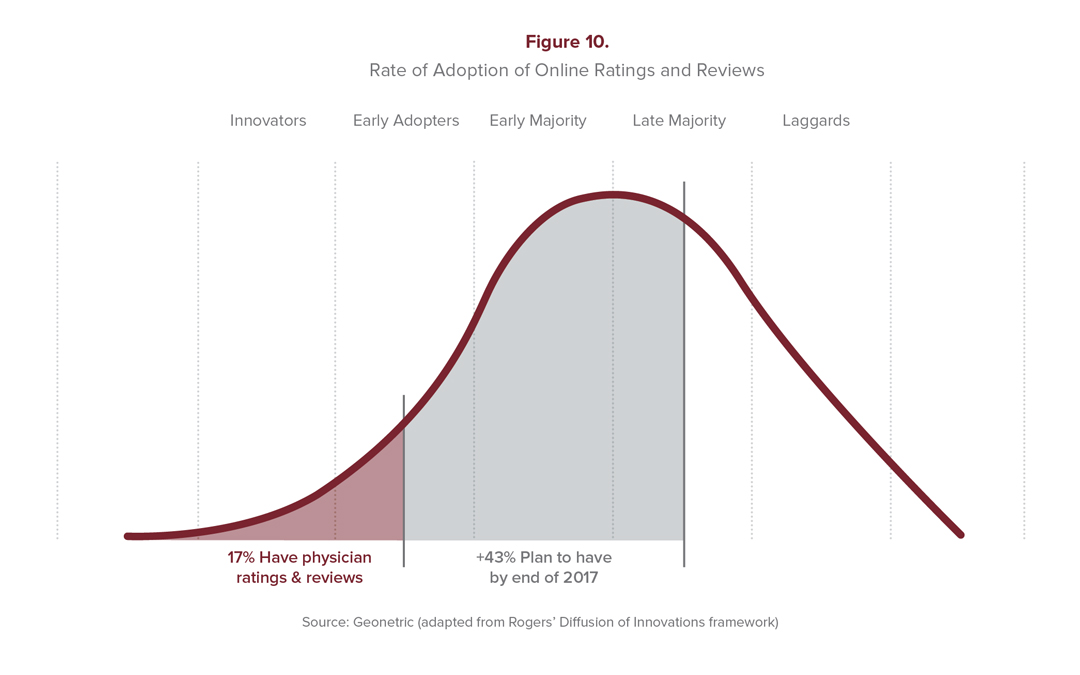Adding ratings and reviews to healthcare websites has gained popularity over the last two years. Even if you weren’t an early adopter, there’s still incredible benefits to be had by adding the feature to your site.
From Amazon to Netflix, consumers are increasingly familiar using ratings to evaluate products and services. Often these take the form of the iconic star rating system that has become the go-to method for indicating user satisfaction or dissatisfaction.
It’s clearly not just for movies and books anymore. You’ve seen the statistics: 84% of health consumers view digital solutions as the most effective way to search for a doctor. And when asked about the last time they looked up health or medical information, 77% of online health consumers say they began with search engines.
Healthcare marketers monitor these trends in consumer behavior and use them to shift the strategies they use to promote physicians, giving rise to the popularity and effectiveness of online ratings and reviews.
Rate of adoption of online ratings and reviews
The number of patients who used online reviews jumped 68% from 2013 to 2014. And our research indicates by the end of 2017, 60% of health systems and hospitals will have launched ratings and reviews.

Even if you do not have the advantage of having adopted this technique when it first started, there are still incredible benefits to be had by starting now. Obviously, it meets patients’ needs. According to industry research, 61% of patients use reviews before selecting a provider, 19% use them after selecting a provider, and 20% have used ratings and reviews to evaluate their current doctor.
In addition to patient experience benefits, implementing ratings and reviews has numerous search and optimization advantages.
Search engine optimization benefits
If built correctly, Google will display current rating information in rich snippets right in search results. And for some organizations, their own ratings and reviews will outrank reviews from other organizations, such as Healthgrades or WebMD. Many organizations also see increased appointment requests. Together with the rating information in your profile, these kinds of rich snippets drive traffic from organic search, increase engagement with existing profiles, and ultimately lead to more appointments with your physicians.
How big of an SEO boost can you expect from adding ratings? While there are no guarantees, the University of Utah Health Care reported a significant increase in traffic from organic search since implementing physician ratings on their website. After investing in ratings and reviews, one of our clients saw a 55% increase in URLs ranked 1–4 on search results pages.
And because research reveals that 77% of patients use search prior to booking an online appointment, it’s clear that physician ratings are a potent means of promoting physicians and converting site visitors into scheduled patients.
The time to start is now
With the innovators and early adopters having led the charge, the majority of healthcare organizations now have a clear path forward on how to implement ratings and reviews. And, if your competitors haven’t already gone to market with the feature, you can still be seen as an early mover in your region. Even if you’re competitors beat you to the punch, implementing ratings and reviews is still an effective way to ensure your providers remain at the top of search results pages.
If your organization is on the fence about adding ratings and reviews to your site, let us help. Organizations of all sizes have turned to us to help them navigate the technical and political challenges that may arise and reap the rewards of improved patient acquisition and increased URL rankings.


